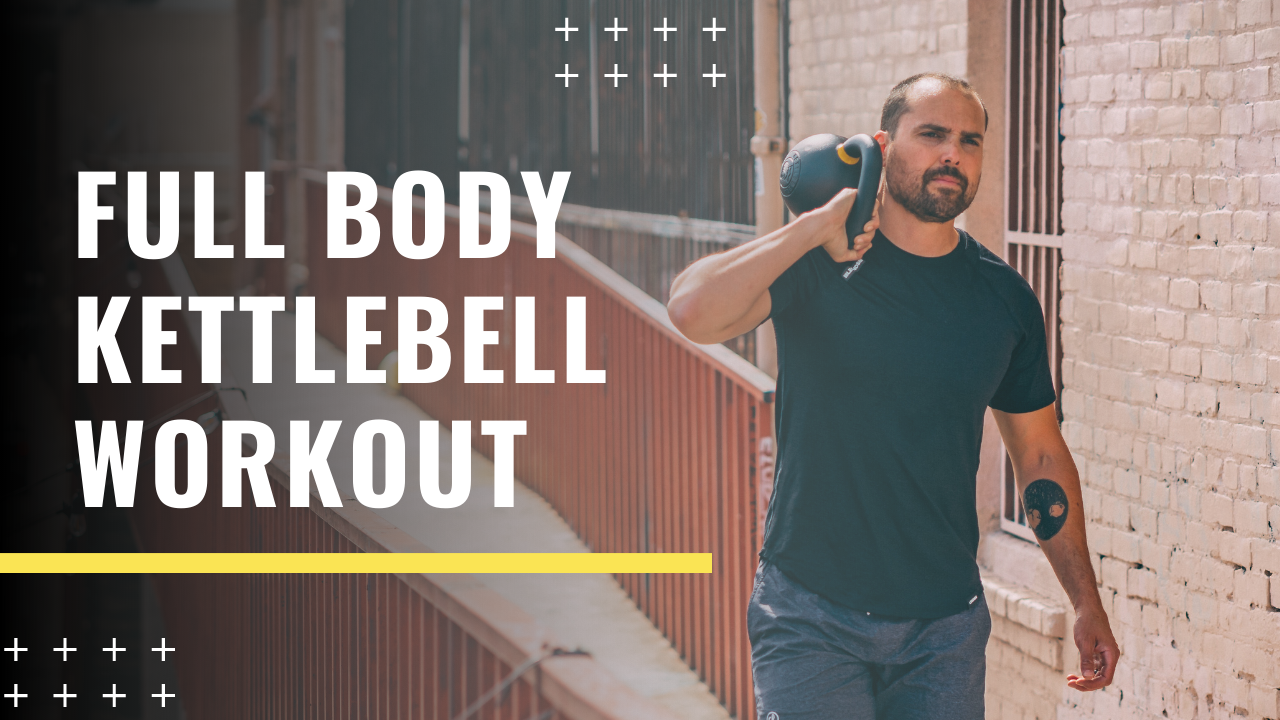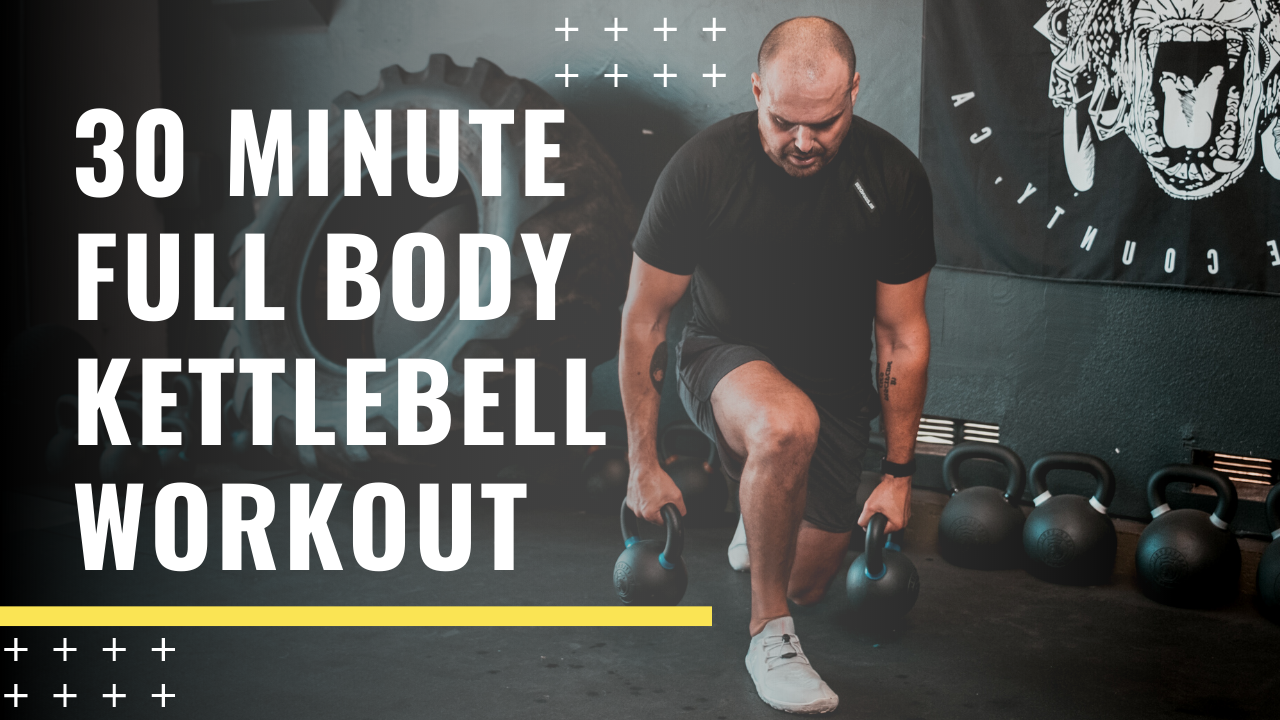As you get older, the most important aspect to maintain when it comes to exercise is variety. It can become very easy to stick with a routine you are comfortable with but it is important to keep challenging your body in different ways. This can prevent joint pain and injuries, along with keeping you moving the best you can be to support your adventures!
Kettlebells are a great way to do that, although they may seem a little intimate at first especially if you have any aches, pains, or conditions such as osteoarthritis or osteoporosis. I am a physical therapist and work exclusively with people that have osteoarthritis. I use kettlebells with my clients all the time!
Kettlebells can absolutely help you to build strength and power, two key things that help keep you active in different ways than dumbbells, bands, and exercise machines can.
Here are three reasons you should be using kettlebells after 50:
Kettlebells can help improve muscular power . Muscle power is strength + speed. It has been found that as early as 40 years old, muscular power tends to naturally decline (1). That's if you don't do anything to maintain it. It was also found that "After the age of 60, power decreases even more rapidly at a rate of 3% to 5% annually, affecting the ability to move and react quickly" (2).
Why is power important? Research says muscular power is correlated with living independently and doing daily activities as you get older (3). Adventure requires even more power!
You may be hesitant to add speed to exercises for fear of hurting yourself, especially if you are dealing with joint pain. The good thing is that when your body is prepared for them, kettlebell exercises allow for easy inclusion of power with movements like kettlebell swings and push presses.
Preparing your body for explosive power movements requires appropriate muscle strength and form to correctly carry out- even if they seem impossible right now. I had one client with spinal stenosis and knee pain build up enough strength to begin doing kettlebell swings regularly! It's possible!
Kettlebells are versatile. Kettlebells can be used almost anywhere and for almost any exercise! Instead of having to get multiple sets of dumbbells, one kettlebell can give you a great workout! This is especially important when it is hard to get to the gym or you prefer working out at home. It's easy and affordable to get one medium sized kettlebell and get a good workout in!
Kettlebells provide a full body workout . Popular kettlebell movements usually challenge many different muscles at once. Take kettlebell swings for example. You are working your hips, your hamstrings, your core, and your upper body in some cases! Or a kettlebell weighted goblet squat where you are working your hips, your core, your hamstrings, and your quads!
My three favorite exercises as a physical therapist working with those with joint pain are here:
Kettlebell side step: I LOVE this one because in our daily lives, especially as you get older, you don't tend to move side to side very often- especially deliberately. I have seen moving sideways bring extremely powerful results when it comes to relieving joint pain in clients with hip, knee, and low back osteoarthritis.
This movement can help to strengthen the outside of your hips which are vital joints to protect your knees and your back!
How to do it: hold the kettlebell close to your chest, stand on one leg and sit your hips back slightly so you are in a small squat. Then take the opposite leg and start touching your leg to the side and then come back to the middle. Repeat this for 20-30 times or until you feel the leg you are standing on begin to fatigue in the hip. Then switch sides.
Kettlebell swing : Again, one of the other sets of muscles that tends to be neglected is the backs of your legs. When we are primarily walking for exercise, our thighs and fronts of our hips do most of the work. If the backs of your legs become weak they can become tight and could lead to knee, hip, or even back pain.
Hamstring strength (muscles in the backs of your legs) has been found to help provide optimal support to the knee joint along with the quadriceps (thigh muscles), addressed in the next exercise. (4) This is especially important if you are dealing with knee aches, pains, or arthritis or if you want to keep your knees healthy.
Kettlebell swings are a great way to get some power going through the backs of those legs! I use this exercise very often for clients I see with degenerative disc disease, knee osteoarthritis, and hip osteoarthritis. The key is making sure you have the correct form and are ready for the exercise by starting with some basic hamstring strengthening exercises before you ask them to move faster!
How to do it: Hang onto the kettlebell with both hands in front of you. Bend your hips backward and let the kettlebell come between your legs. Squeeze your hips and stand up, floating the kettlebell forward. The maximum height the kettlebell should reach at first is parallel with the ground. Repeat this is a smooth motion for 10-15 times depending on how it feels and how heavy the weight is.
Kettlebell goblet squat : Squats can be difficult especially if you have a history of or currently have knee, hip or low back pain. But they are SO important. You have to know how to squat to make it through the day: sitting down on a chair, getting up from the toilet, getting in and out of the car, etc. I often find that many people have difficulty because of incorrect form.
When you are squatting you should move at your hips BEFORE you bend your knees. Many want to bend knees first though. This can lead to decreased mobility and difficulty squatting.
Whenever I use kettlebell goblet squats, I always make sure that you can complete at least 15 chair squats from a normal height chair without pain or difficulty before adding weight.
Adding weight can help significantly with building strength in your legs which is vital to keeping your joints healthy.
How to do this: Start sitting in a chair, holding the weight close to your chest. Keep the weight there as you stand up and then sit slowly back down. Repeat for 8-10 times when starting. I always like using a chair because it forces you to use your hips first!
Conclusion:
Kettlebells can be a great way to build strength to support your joints. They are a fun way to add variety to your training and keep your body guessing. Don't be afraid to mix things up a bit!
I do absolutely recommend that if you are not familiar with using kettlebells that you find a medical or exercise professional to help you get started, especially if you are dealing with osteoarthritis or other conditions that impact mobility. This will be the best way to prevent injury or exacerbation of pain.
Cheers to strength!
bio: dr Alyssa Kuhn is a physical therapist and arthritis specialist with Keep the Adventure Alive based in Sandy, UT. She is on a mission to help arthritis sufferers around the world go from hopeless to hopeful! She empowers those with osteoarthritis to pursue and achieve their adventures. No longer do you have to accept arthritis as a death sentence to the things you love doing. Alyssa loves leading her own adventures in Utah as you can always find her hiking, skiing, road biking, or working out in the gym! She would love to show you what's possible.
Youtube: https://www.youtube.com/channel/UCrA-zi9rqRQsPGinrwVhISQ Instagram: https://www.instagram.com/adventurealive
Website: https://www.keeptheadventurealive.com
(1) Alcazar, Julian et al. "Age- and Sex-Specific Changes in Lower-Limb Muscle Power Throughout the Lifespan." The journals of gerontology. Series A, Biological sciences and medical sciences vol. 75.7 (2020): 1369-1378. doi:10.1093/gerona/glaa013
(2) Avers, Dale, and Marybeth Brown. “White paper: Strength training for the older adult.” Journal of geriatric physical therapy (2001) vol. 32,4 (2009): 148-52, 158. (3) Rice†, John and Keogh‡, Justin (2009) "Power Training: Can it Improve Functional Performance in Older Adults? A Systematic Review," International Journal of Exercise Science: Vol. 2 : Iss. 2.
(4) Hafez, Ashraf Ramadan et al. "Treatment of knee osteoarthritis in relation to hamstring and quadriceps strength." Journal of physical therapy science vol. 25:11 (2013): 1401-5. doi:10.1589/jpts.25.1401








